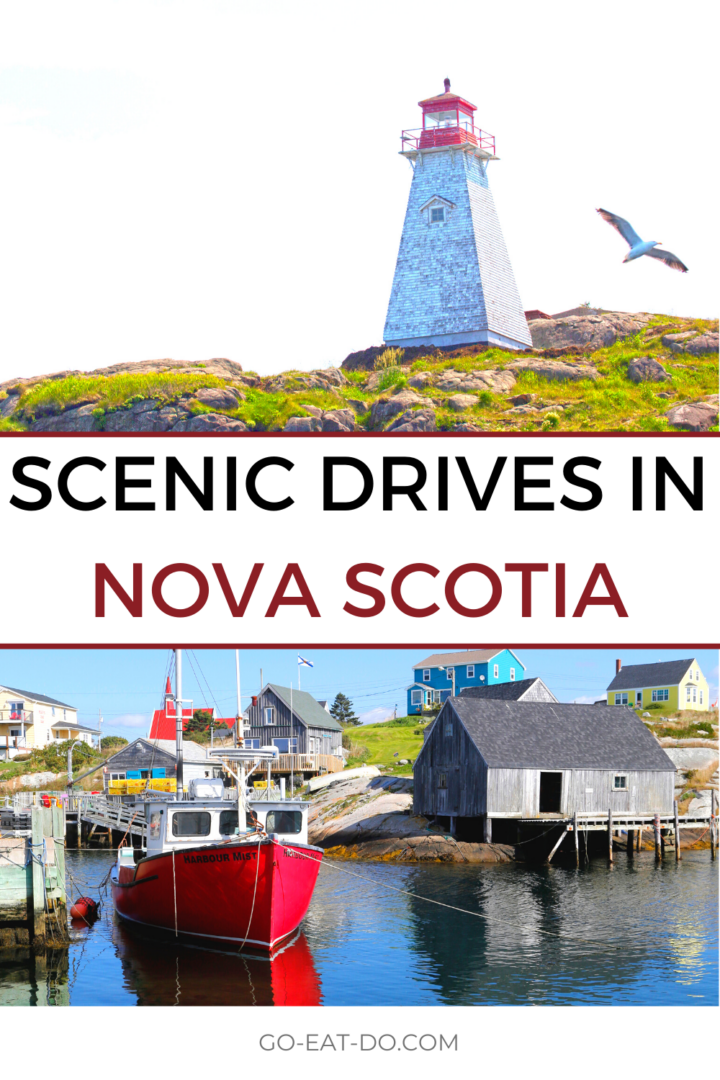Stuart Forster outlines the Cabot Trail, Lighthouse Route and other scenic drives in Nova Scotia, Canada.
Please remember that the coronavirus pandemic is impacting international travel. This blog post is intended as inspiration, so that you can plan and book a trip to Nova Scotia when the time is right.
Disclosure: This post was paid for by Tourism Nova Scotia.
Some of the links and banners below are affiliate links, meaning, at no additional cost to you, I will earn a commission if you click through and make a purchase.
Nova Scotia is on Canada’s east coast. Jutting into the North Atlantic, the province offers much to do and see during a road trip.
On my first visit to Nova Scotia I was blown away by the warmth of hospitality, beauty of the coastal landscapes and quality of the seafood served in restaurants. They’re among the reasons why I’ve subsequently returned more than once; each time exploring and experiencing more of the province.

A Canadian road trip
Planning on visiting Nova Scotia as part of a broader Canada road trip? It’s easy to access. Highway 104 runs on the Chignecto Isthmus, a strip of land just 23 kilometres (14 miles) across, connecting the province with neighbouring New Brunswick.
Car ferries operate between Digby, on Nova Scotia’s Fundy Shore, and Saint John in New Brunswick. They also cross the Northumberland Strait between Caribou and Wood Islands, on Prince Edward Island. From North Sydney, it’s possible to cross to Port aux Basques and Argentia in Newfoundland and Labrador.
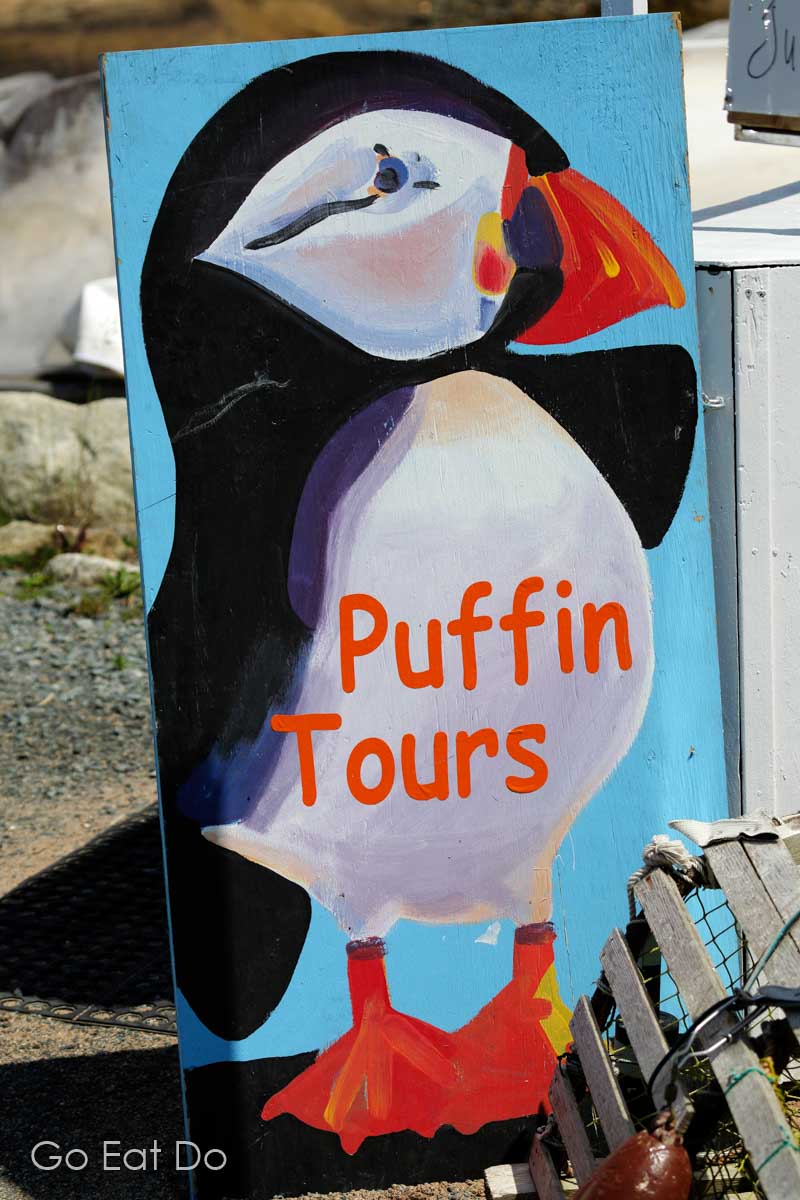
Things to do in Halifax
If you’re planning a holiday in Nova Scotia it’s likely that you’ll fly to Halifax, Nova Scotia’s provincial capital. It’s testimony to Canada’s enormity that the city is located pretty much halfway between Vancouver – over in British Columbia on the country’s west coast – and London, England.
Halifax’s hilltop citadel, the fascinating Maritime Museum of the Atlantic and the Canadian Museum of Immigration at Pier 21 count among the attractions that make the city worth visiting for at least a couple of days. The downtown area is fairly compact and walkable. Bearing that in mind, you may save money by transferring into Halifax then pick up your hire vehicle after a couple of days rather than on arrival in the province.
There’s plenty for foodies in Halifax. Tasting flights at the Garrison Brewing Company, next to Halifax Seaport Farmers Market, offer an introduction to craft brewing in Nova Scotia. Dinner at The Five Fishermen, a stylish restaurant that was formerly a mortuary, is a reason to visit a building reputedly one of Nova Scotia’s most haunted – that said, the only spirit I experienced was a post-meal whiskey. The Press Gang restaurant and oyster bar also offers fine dining in a historic downtown building.

Driving routes in Nova Scotia
Nova Scotia’s driving routes include the Cabot Trail, which is widely regarded among the most scenic drives in Canada. It runs 298 kilometres (185 miles) around the northern tip of Cape Breton Island. The Canso Causeway crosses from the mainland, spanning the Northumberland Strait between Aulds Cove and Port Hastings.
The Cabot Trail’s highlights include Cape Breton Highlands National Park. The Skyline Trail, which can be experienced as an 8.2-kilometre (5.2-mile) circular walk, is one of the reasons why breaking the journey is worthwhile. The trail provides views over the Gulf of Saint Lawrence, where whales surface intermittently, and rugged countryside inhabited by black bears and moose.
Baddeck is the location of the Alexander Graham Bell National Historic Site. The summer home of the telephone’s inventor looks onto Bras d’Or Lake and hosts exhibitions about Bell’s achievements. They included developing the world’s fastest marine craft and sound recording equipment.

Driving the Fleur-de-Lis Trail
The Fleur-de-Lis Trail explores the Acadian heritage of Cape Breton Island’s south shore. It runs to the Fortress of Louisbourg National Historic Site where reenactors bring to life the history of a key location in the Anglo-French struggle for power in North America.
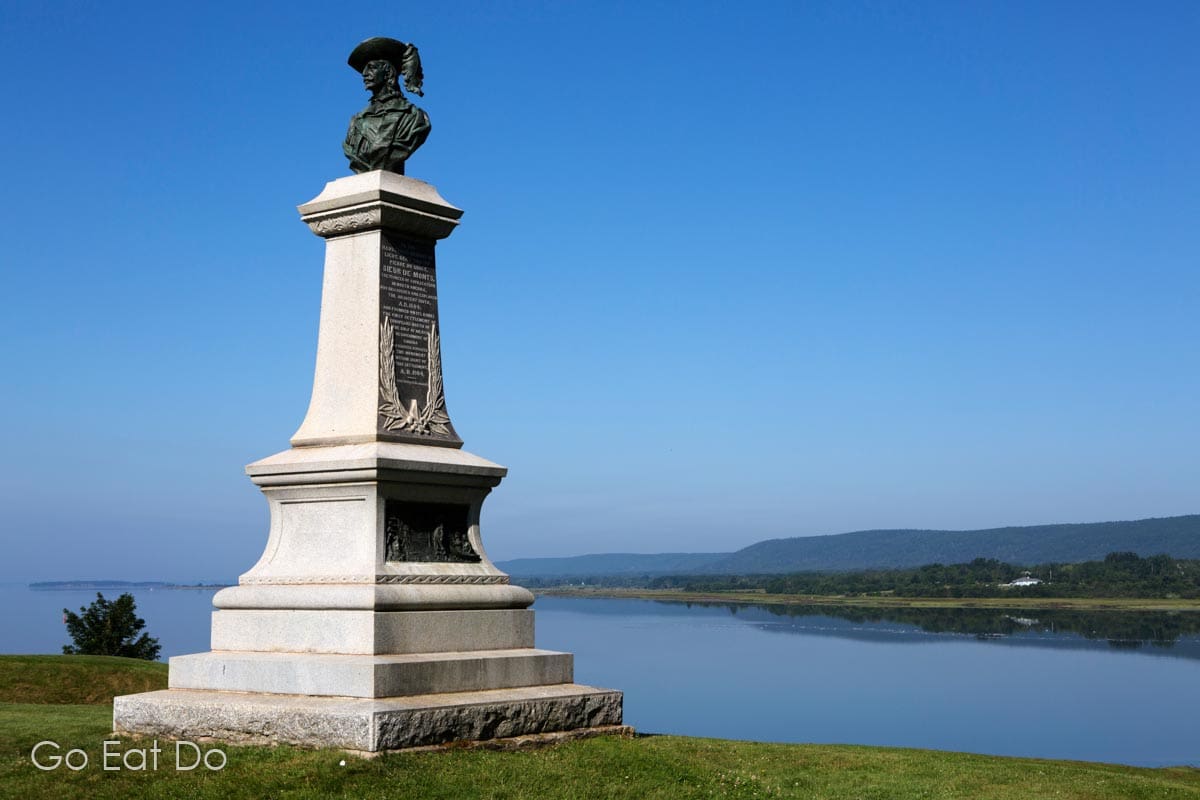
At Louisbourg, you can join the relatively short Marconi Trail to Glace Bay. At Cape Breton Miners Museum it’s possible to tour underground guided by a former miner and learn about the long history of coal mining in Nova Scotia. The route is named after Guglielmo Marconi, who in 1902 sent the first radio message across the Atlantic from Glace Bay’s Marconi National Historic Site.
Nova Scotia’s Ceilidh Trail runs from Port Hastings to Margaree Harbour, where you can join the Cabot Trail. The route passes through coastal communities with Celtic heritage. You’ll have numerous opportunities to hike and hear thumping live music of the type traditionally played at ceilidhs. One place to do that is the Celtic Music Interpretive Centre in Judique.

The Sunrise Trail scenic driving route
Follow Nova Scotia’s Sunrise Trail between the Canso Causeway and Amherst to pass through communities along the province’s North Shore. You can pause for walks on several outstanding beaches while skirting the Northumberland Strait, including Heather Beach and Northport Beach Provincial Park.
Arisaig Provincial Park, close to Antigonish, features woodland trails and is a great place to visit if you’re interested in geology. The region’s rocks hold a wealth of fossils.
Pictou is near New Glasgow and the location of the Hector Heritage Quay. A replica of the Hector docked in Pictou in 1773 holding 189 Scots. It was the first of many ships to carry Scottish settlers to the land whose Latin name means New Scotland.
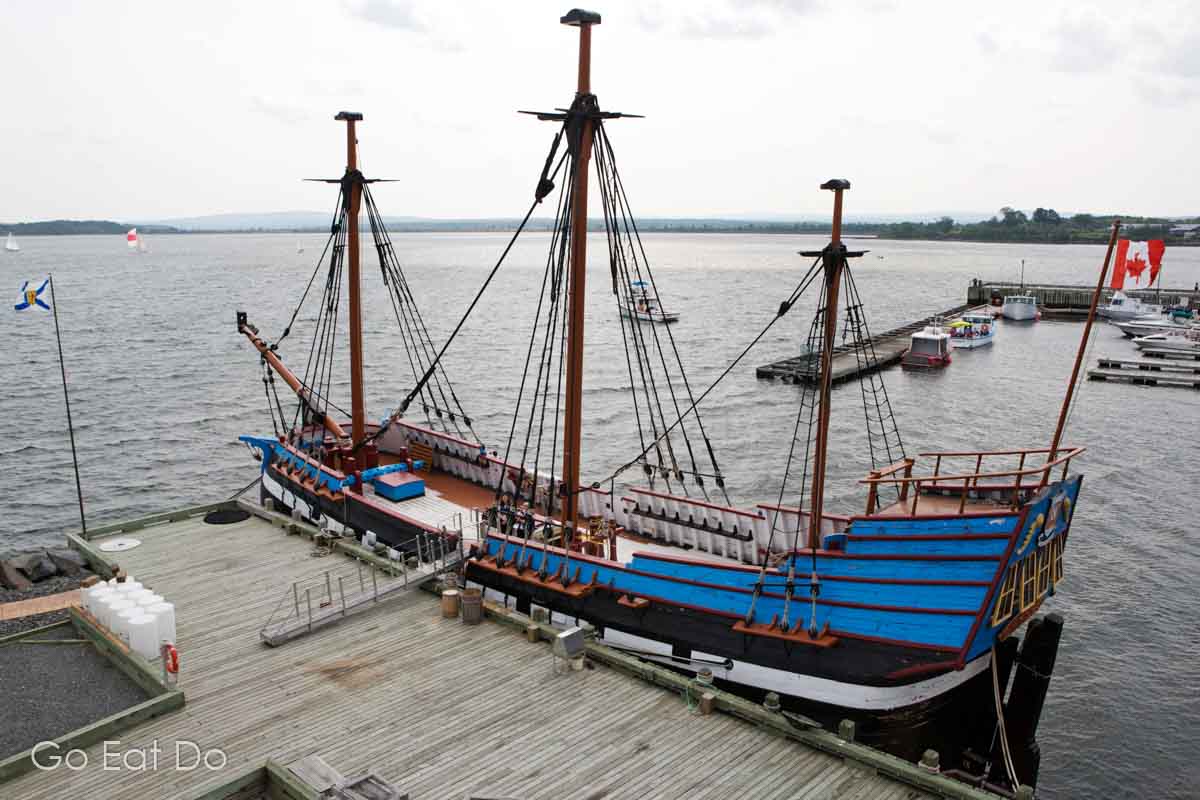
Visiting Pictou
If you enjoy cooking you may enjoy spending the day with Alain Bossé, the culinary ambassador for Atlantic Canada who is widely known as The Kilted Chef. Alain is based in Pictou and offers visitors opportunities to see where he sources ingredients before cooking classes.
The Glooscap Trail connects Amherst with Scot’s Bay, skirting the shoreline of the Bay of Fundy and Minas Basin. The world’s highest tides have been recorded at Burntcoat Head Park. Looking for a memorable meal? Dining on the Ocean Floor at low tide pairs regional beers and wines with foraged and locally sourced food.
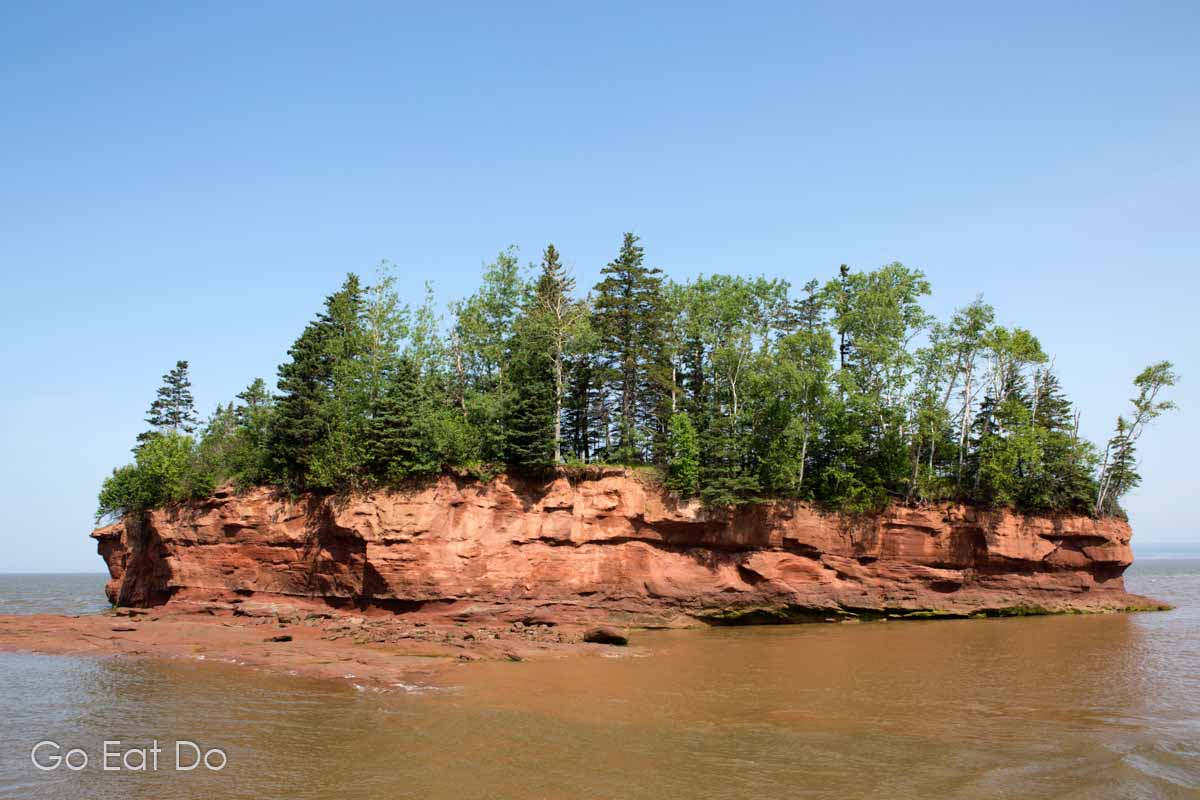
Marine Drive along the Eastern Shore
Nova Scotia’s Marine Drive skirts the Atlantic coastline along the Eastern Shore, between the Canso Causeway and Dartmouth (on the opposite side of the harbour to Halifax).
The route skirts through Musquodoboit Harbour and by numerous lakes and wilderness areas.
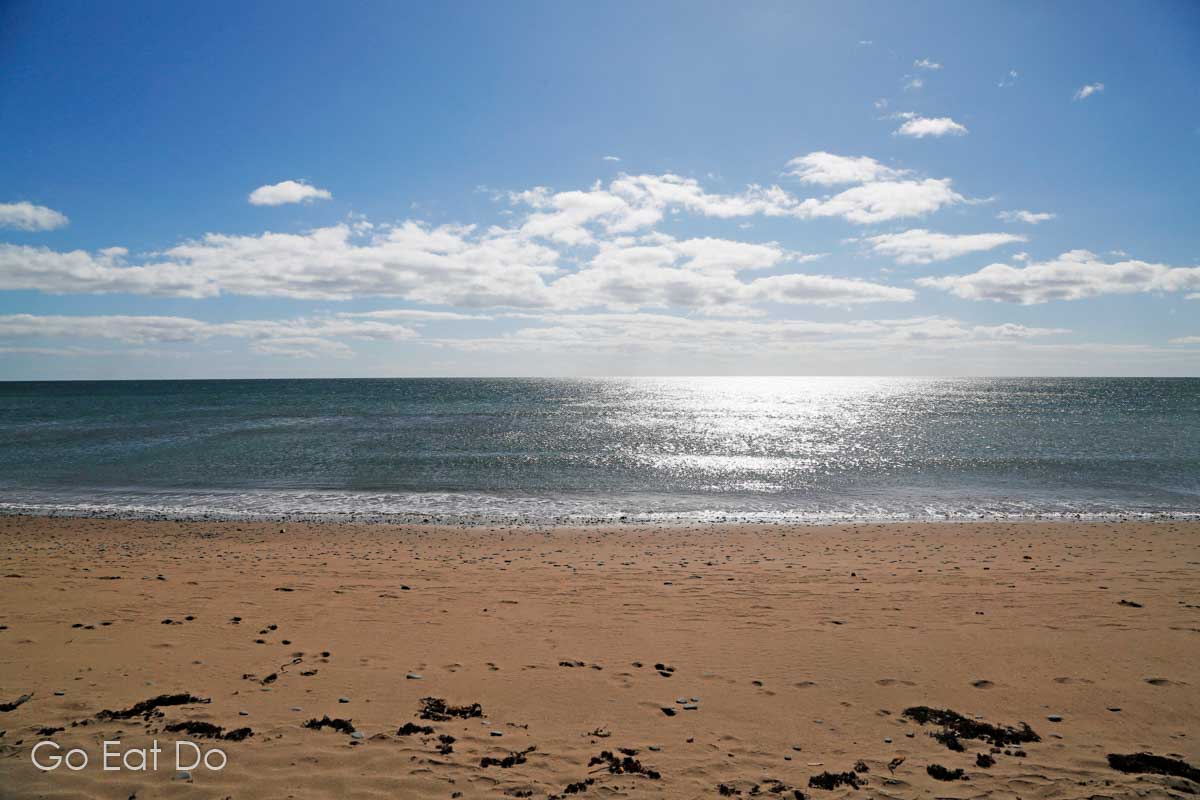
Its attractions include the family-friendly Clam Harbour Beach Provincial Park and Taylor Head Provincial Park, which is renowned for its rugged hiking trails.
The Sherbrooke Village living museum conveys life in Nova Scotia during the 19th century. Interpreters show how the likes of blacksmiths, printers and photographers plied their trades in bygone times.
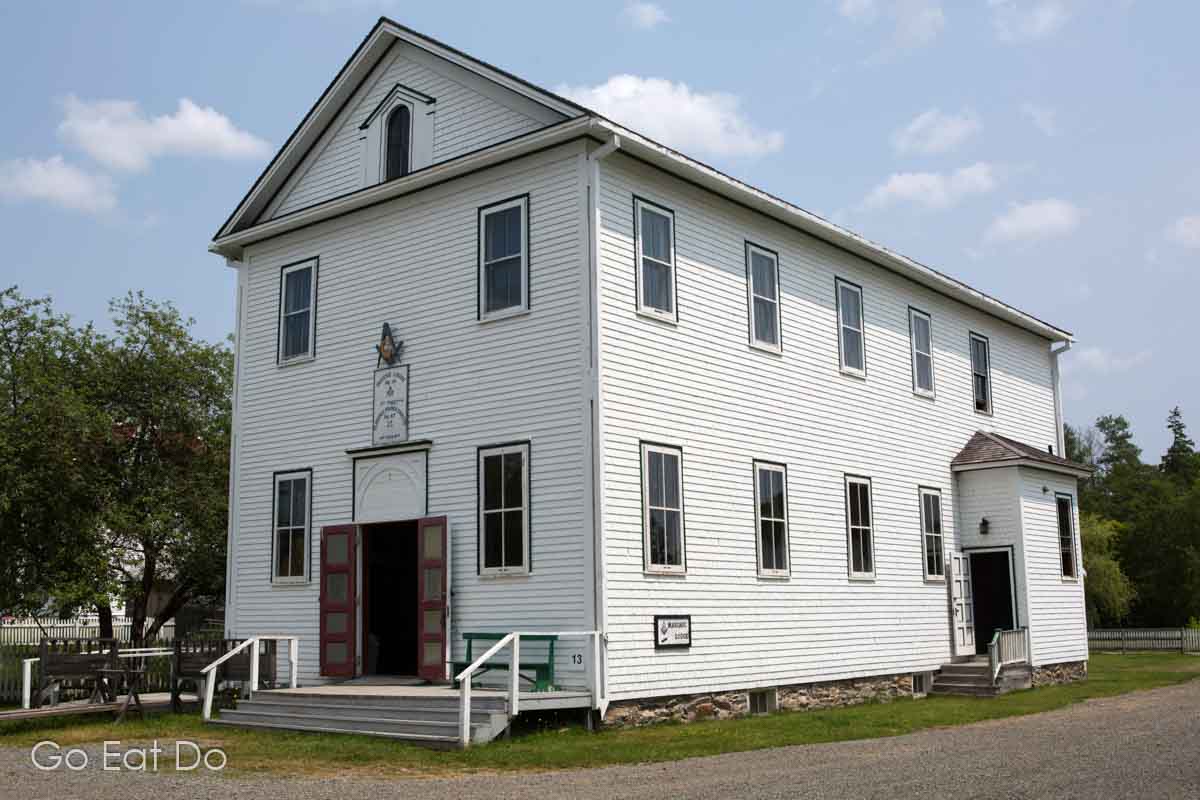
Nova Scotia’s Lighthouse Route
The Lighthouse Route skirts Nova Scotia’s South Shore between Halifax and Yarmouth. The lighthouses at Peggy’s Cove and Cape Forchu count among those that give this scenic driving route its name.
Lunenburg, a UNESCO World Heritage Site, and Mahone Bay, famed for its three waterfront churches, are just two of the places where you should consider breaking your journey.

Barrington, known as the Lobster Capital of Canada, is home to Captain Kat’s Lobster Shack, a restaurant where you can savour the crustacean in dishes ranging from fondue to poutine.
At Yarmouth, the Lighthouse Route joins the Evangeline Trail. Continuing to Wolfville and passing through the Annapolis Valley, which is dotted with wineries and orchards.

Several whale-watching tours depart from Digby, including Ocean Explorations Whale Cruises. They bring opportunities to view marine life including humpbacks and right whales.
Combining scenic driving routes provides a framework for experiencing Nova Scotia at your own pace.
Driving in Nova Scotia
Approximately 45 per cent of Nova Scotia’s 980,000 inhabitants live in and around Halifax. I found driving – both in the city and elsewhere – to be stress-free.
Drivers tend to be polite. It’s by no means unusual to see drivers stop to let pedestrians cross streets, even on roads where there’s no official crossing.
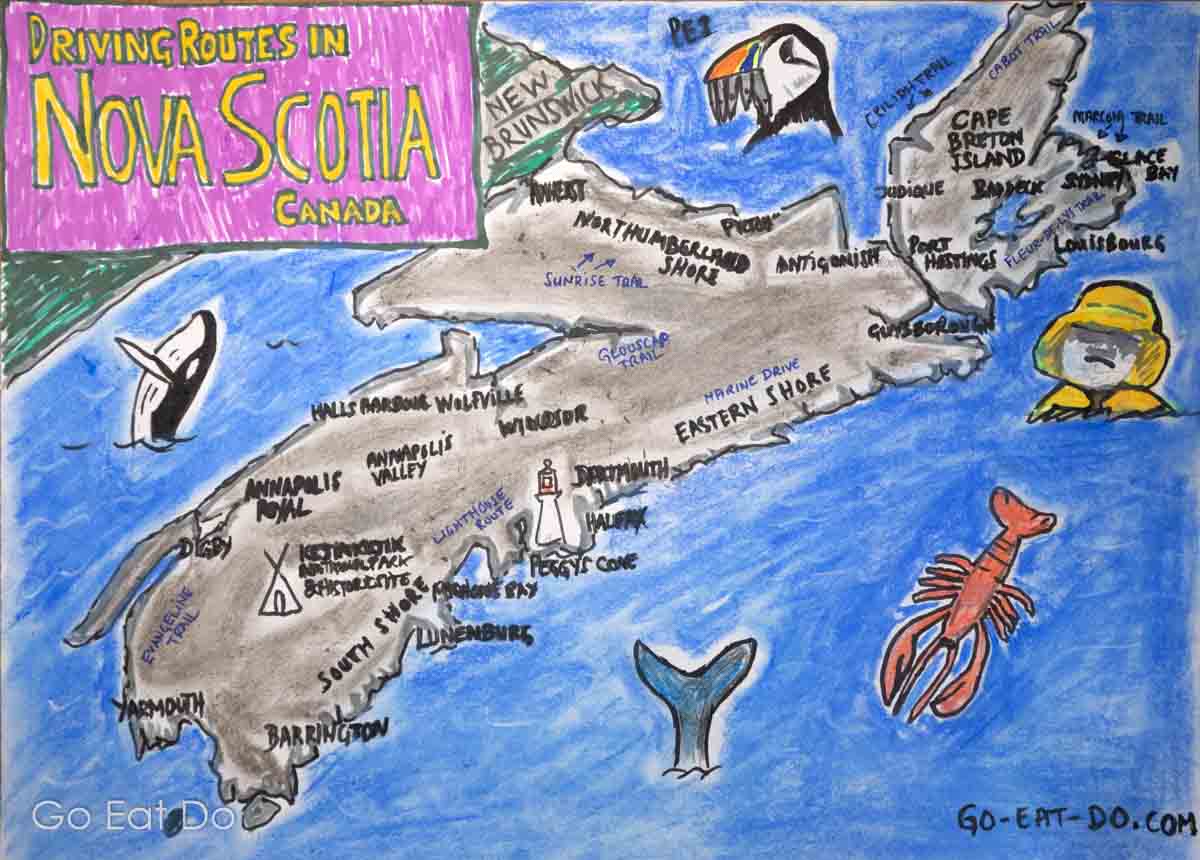
The province covers an area equivalent to approximately a quarter of the United Kingdom. Yet the UK is home to more than 67 million people. Consequently, Nova Scotia’s roads impressed me as being significantly quieter than those in the UK.
Enjoy your road trip in eastern Canada.

top tips for a Nova Scotia road trip
Bear in mind the following when driving in Nova Scotia:
- Other than driving on the right-hand side of the road (rather than the left) the experience of driving in Canada is largely similar to the United Kingdom. Wearing a seat belt is compulsory and speed limits should be adhered to.
- Don’t hurry. Estimated journey times available online tend not to factor in comfort breaks, photo stops and other sightseeing opportunities. Holidays are all about enjoying the moment and embracing impromptu experiences. Consequently, it makes sense not to plan too much driving on any given day.
- Motorhomes – usually referred to in North America as RVs; short for recreational vehicles – are a great way of exploring Nova Scotia and experiencing a Canadian road trip.
- Rental vehicles are available to pick up and drop off at Halifax Stanfield International Airport.
- Remember to take proof of insurance, or buy it, when you hire a vehicle.
Road trip information
- UK driving licenses are valid in Canada. The UK Government website recommends an International Driving Permit (available from UK post offices for £5.50).
- Wildlife tends to be most active early in the morning and around dusk. If you’re driving at those times of day, please be particularly vigilant.
- Nova Scotians tend to be helpful. Listening to suggestions from locals may mean gaining insider tips regarding things to do, where to view wildlife and seasonal events.
- As you’d expect, most international travellers visit during the summertime, from June to August. Attractions can become busy, especially when sightseeing tours from cruise ships cause a spike in visitor numbers. Consequently, it makes sense to plan visits to popular destinations such as Peggy’s Cove early in the morning or late in the afternoon, when they’re relatively quiet.
- Travelling outside of the main tourism season can result in paying less for accommodation and fewer people at popular places. The shoulder seasons, during May then in September and October, can prove good value. Depending on the weather, you may also see spectacular fall colours in Nova Scotia during autumn.

Questions about Covid-19 and travel
Visit the Nova Scotia website to find frequently asked questions relating to the coronavirus (Covid-19).
The answers outline issues such as restrictions on travel to Nova Scotia, self-isolation regulations and where face masks must be worn.
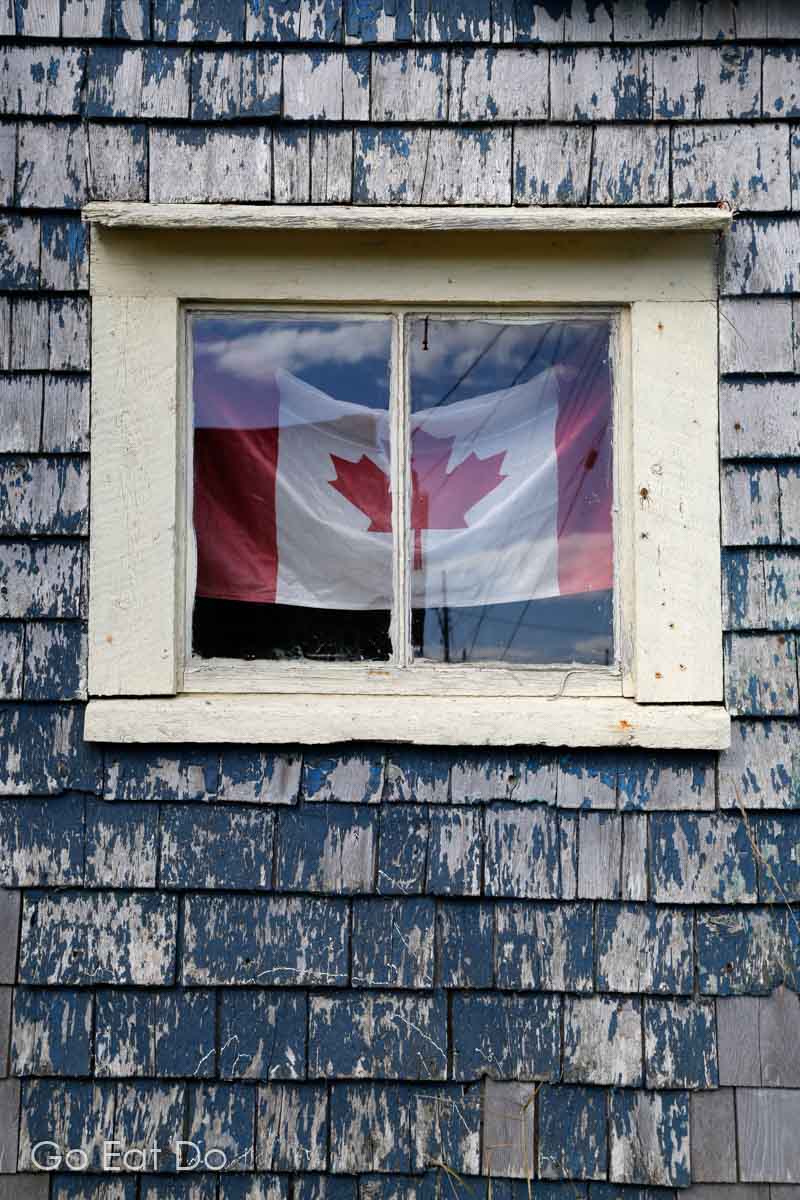
Canada’s Electronic Travel Authorization (eTA)
Most United Kingdom passport holders flying to Canada for leisure or business require an Electronic Travel Authorization (eTA) to enter the country. Some people need visas.
Apply for your eTA via the official Government of Canada website before booking travel. Don’t leave it until you’re at the airport as the approval process sometimes requires supporting documentation and can take several days.
Once approved, eTAs are valid for up to five years.
Be aware: Any site charging more than CAD$7 to process an ETA application is not the official Government of Canada website.

Hotels in Nova Scotia
Planning to travel to Canada independently? Making advance room bookings in hotels or guesthouses provides you with a framework for your driving holiday in Nova Scotia. That gives you an opportunity to research the best places to eat and drink in the vicinity of where you stay. It also means you can scope out things to do and see in the locality.
Booking.com is one of the platforms via which you can find hotels in Nova Scotia:
Booking.com
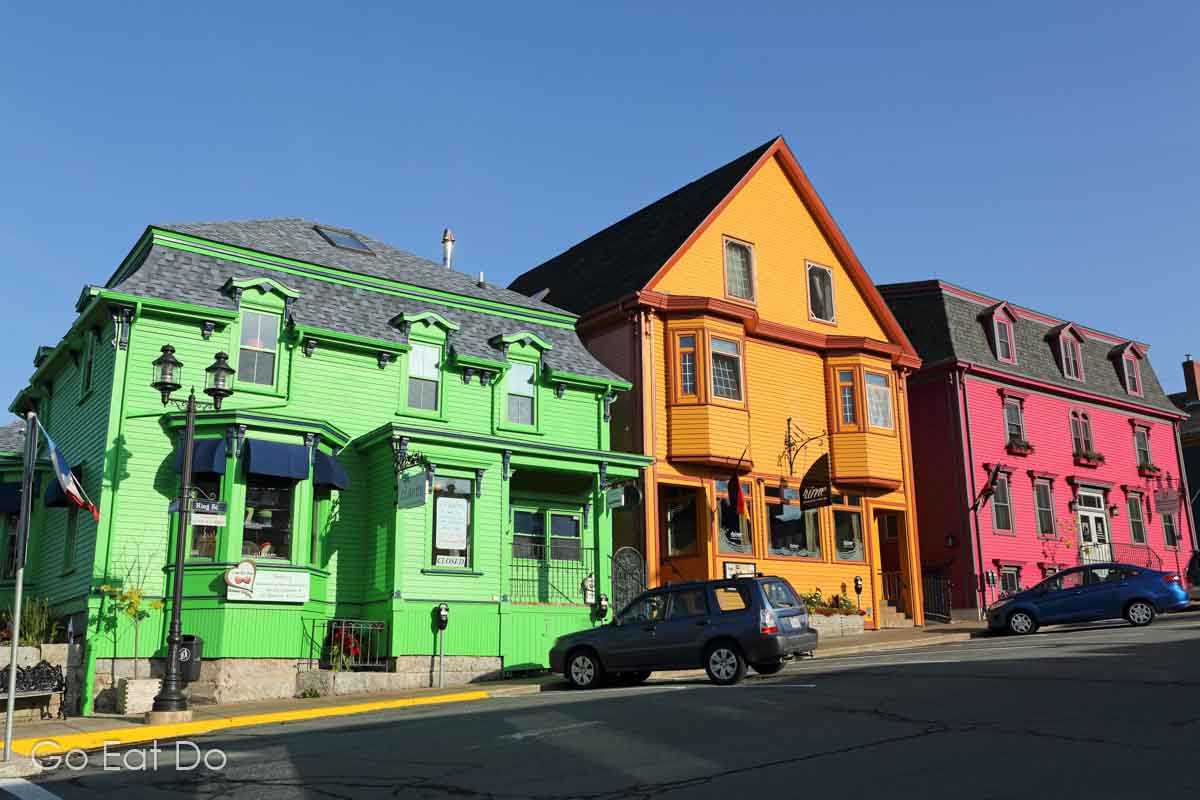
Travel to Nova Scotia
Transfers to Halifax Stanfield International Airport (YHZ) are possible from the likes of Toronto Pearson Airport (YYZ) and Montréal-Pierre Elliott Trudeau International Airport (YUL).
Air Canada’s direct flights from Halifax to London Heathrow (LHR) take approximately five hours and 55 minutes.
WestJet operates flights to Nova Scotia from London Gatwick. It also has direct seasonal services (April into October) from Dublin and Glasgow.
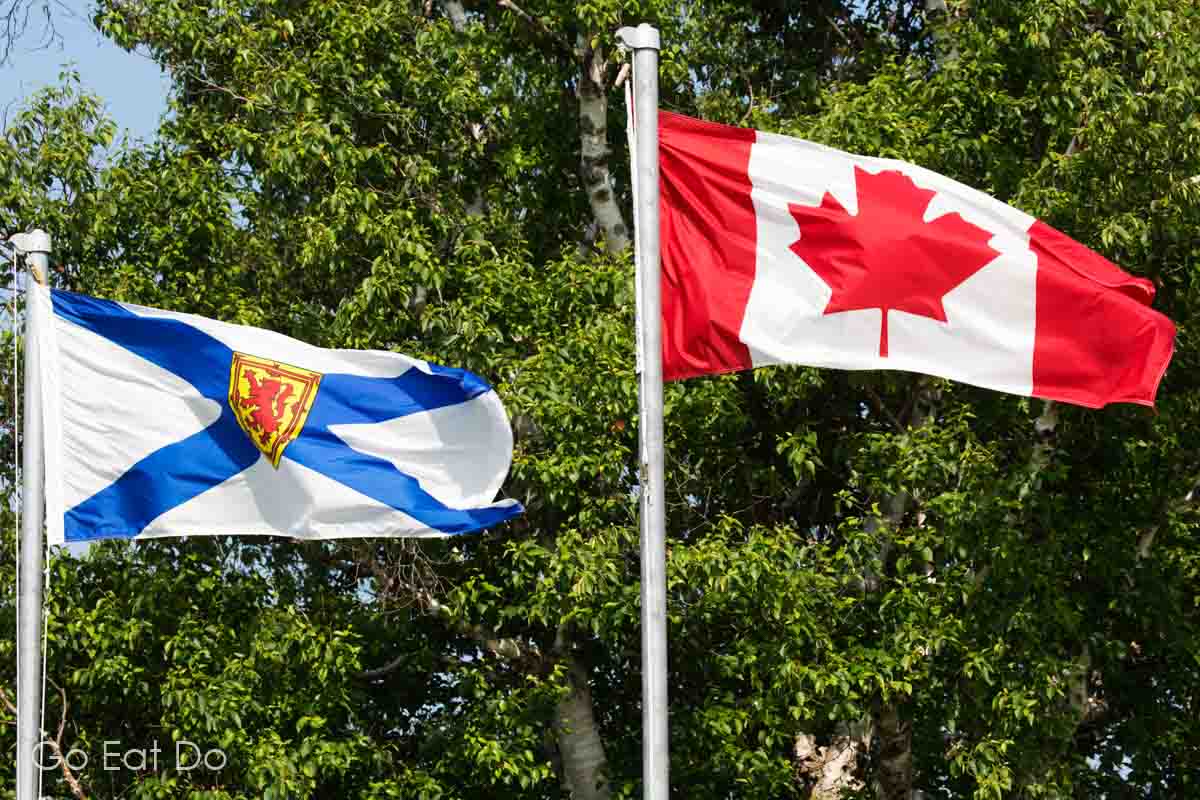
Fly-drive holidays in Nova Scotia
Several UK-based travel companies offer self-drive holidays in Nova Scotia. They include the following operators:
Audley Travel’s 19-day Maritime Treasures Self-Drive Tour swings clockwise through the province. It includes the Cabot Trail.
Canadian Affair’s 14-night Canada Maritime fly-drive package begins and ends in Halifax.

Canadian Sky’s 13-night Self-Drive Nova Scotia and Maritime Magic Treasures holiday includes a couple of days in the neighbouring province of Prince Edward Island.
Frontier Canada’s 7-night Glimpse of Nova Scotia self-drive holiday is tailor-made, including the likes of Kejimkujik National Park and Cape Breton.
Wexas’s 17-day Authentic Nova Scotia Fly-Drive holiday is also tailor-made. Annapolis Royal, Wolfville and Louisbourg count among the suggested inclusions.
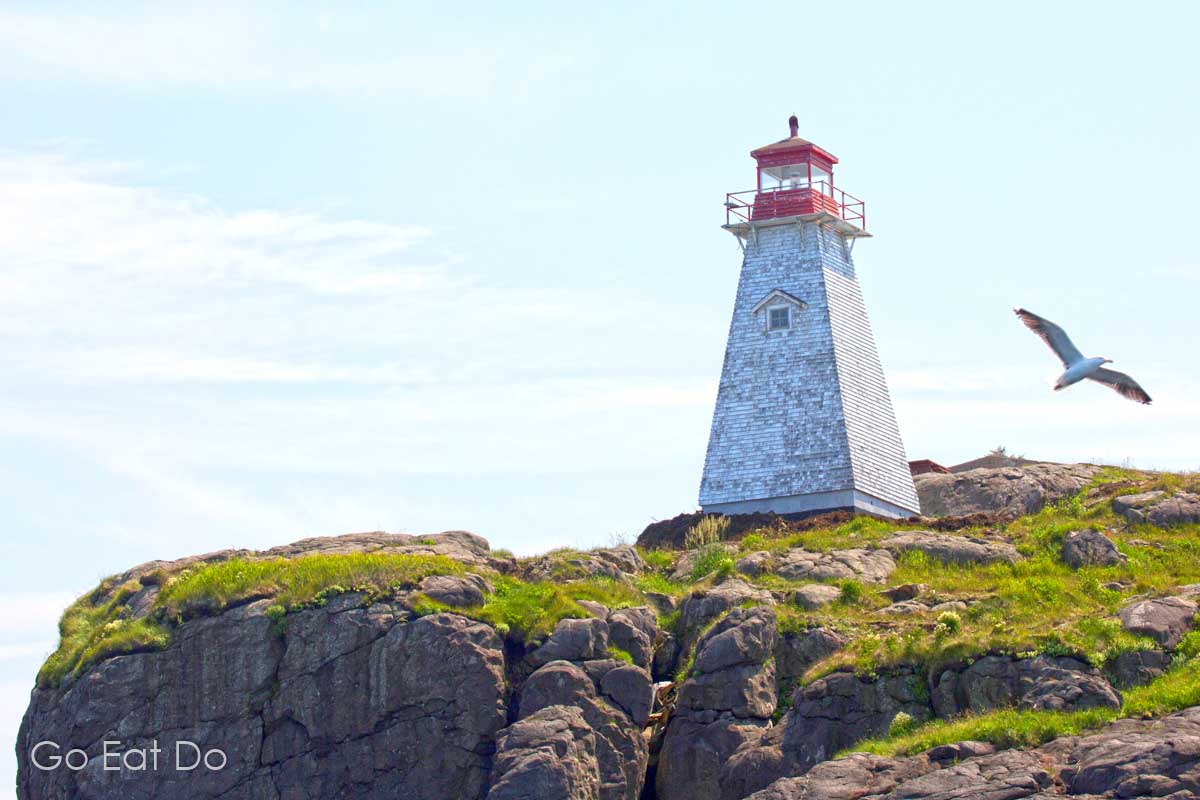
Books about Nova Scotia
Planning a vacation in Nova Scotia? You can buy the following books from Amazon by clicking on the links or cover photos:
Lonely Planet’s Nova Scotia, New Brunswick and Prince Edward Island guidebook:


Moon’s Nova Scotia, New Brunswick and Prince Edward Island guidebook:

Valerie Mansour’s book Nova Scotia Cookery, Then and Now: Modern Interpretations of Heritage provides an idea of what to expect from the province’s delicious cuisine:

Alain Bossé has authored The Acadian Kitchen: Recipes from Then and Now about the cuisine of the French-speaking people of Nova Scotia and neighbouring New Brunswick which provided a base for Cajun food:

Further information
View the Nova Scotia website for more ideas about things to do and see in the province.
Listen to Stuart chatting about driving in the province in this Road Trip in Nova Scotia video on YouTube, which features photos not shown in this blog post:
Stuart Forster travels frequently in Canada. He was presented with the British Annual Canada Travel Award for Best Online Content in 2017.
If you enjoyed this post why not sign up for the free Go Eat Do newsletter? It’s a hassle-free way of getting links to posts on a monthly basis.
‘Like’ the Go Eat Do Facebook page to see more photos and content.
This post was originally published on Go Eat Do on 24 October 2020.
